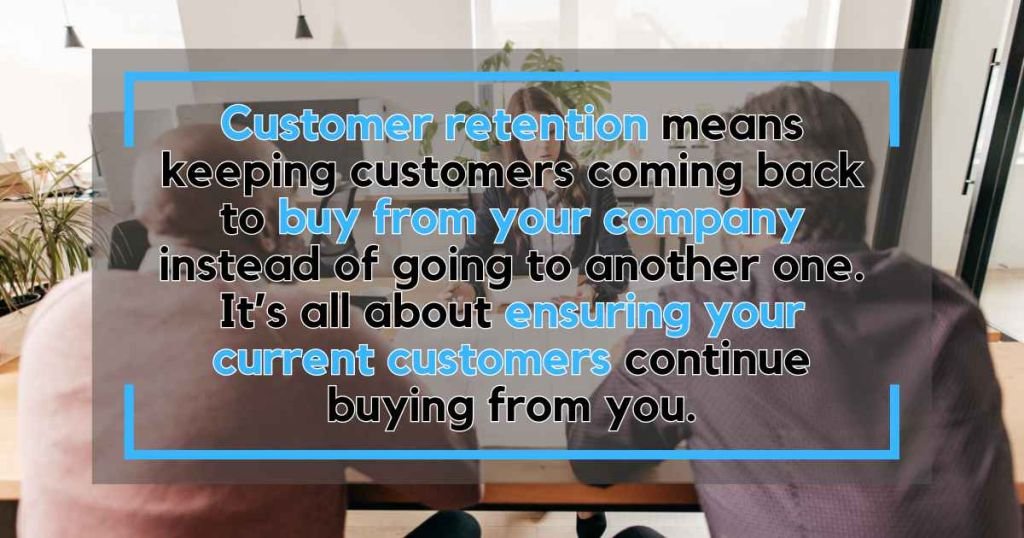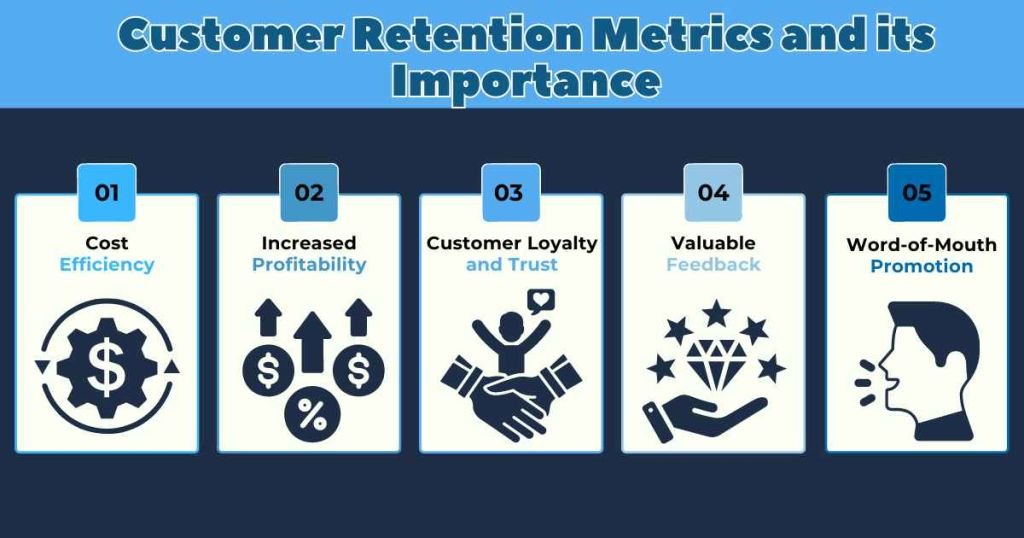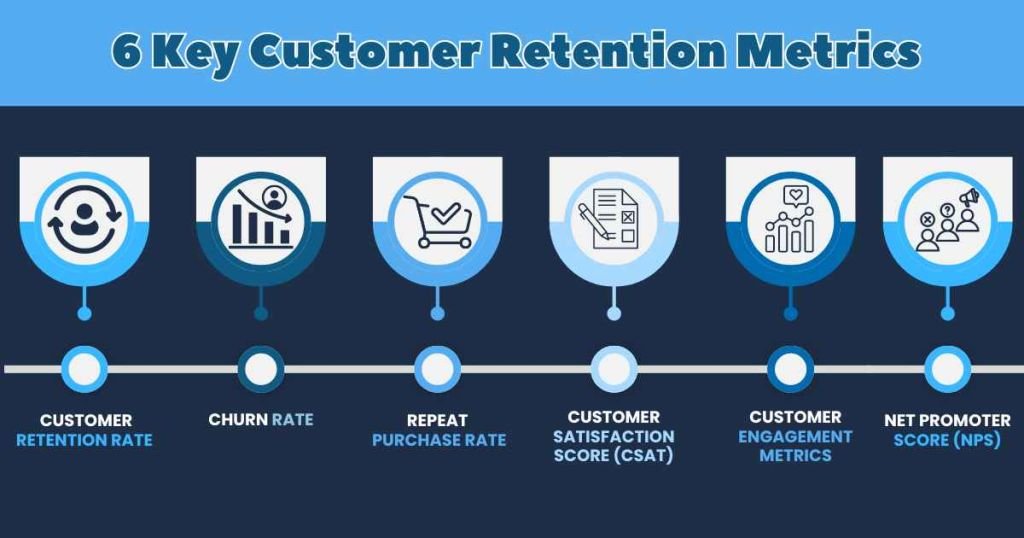During the pandemic, lockdowns and social distancing made online shopping much more popular. Stores quickly adapted by trying new ways to attract online customers. Now, people expect a great online shopping experience.
In 2024, consumers are becoming more cautious with their spending, particularly on luxury items. A recent study by Deloitte revealed that 72% of individuals have altered their spending habits over the past six months, and 45% intend to increase their online shopping in the coming half-year.
Because many people have less money now, they think a lot before buying things. But some still want to shop when they can. Online stores can take advantage of this by showing the right products at the right time and using data to create personalized shopping experiences.
What is Customer Retention?

Customer retention means keeping customers coming back to buy from your company instead of going to another one. It’s all about ensuring your current customers continue buying from you. This is important for a business to see if they are doing a good job. If they’re not, their business might struggle.
Philip Kotler, an expert in marketing, explains customer retention as a company’s ability to keep its customers for a long time. He emphasizes that it’s important not just to attract new customers but to keep current ones happy. Kotler notes that it costs less to keep existing customers, who are likely to buy more as time goes on. He highlights the importance of good customer service and continuous engagement to maintain strong relationships.
Customer retention shows if your product and service make your current customers happy. It’s essential for businesses that rely on customers paying regularly.
Importance of Customer Retention Metrics

Customer retention is important because it reflects the trust and loyalty of your customers. It brings financial stability, saves money, encourages growth through referrals, and provides useful feedback for improvement. Focusing on current customers often leads to better long-term success than spending a lot on marketing and sales.
Turning past customers into repeat buyers and keeping high profits is easier because they already trust your brand and know your sales and support teams. Plus, a positive experience makes it more likely that customers will recommend your brand to others, creating valuable word-of-mouth promotion.
Customer retention metrics are key indicators used by businesses to track how well they are keeping their customers over time. These metrics are important because they help a company understand the effectiveness of its customer service, marketing, and product strategies in maintaining a stable customer base.
Here’s why customer retention metrics are so important:
- Cost Efficiency: Retaining an existing customer is generally less expensive than acquiring a new one. Businesses save on marketing and acquisition costs, making customer retention a more cost-effective strategy.
- Increased Profitability: Loyal customers are likely to buy more and increase their spending over time. They also tend to try new products and services offered by the brand, contributing to higher profitability.
- Customer Loyalty and Trust: High retention rates are often a sign of customer loyalty, which is built on trust and satisfaction. Loyal customers are more forgiving and are likely to stick with a brand even in tough times.
- Valuable Feedback: Retained customers provide continuous feedback, allowing businesses to improve their products and services. This feedback loop can lead to better customer experiences and innovation.
- Word-of-Mouth Promotion: Satisfied customers who stay with a brand are more likely to recommend it to others, effectively acting as ambassadors and helping to attract new customers organically.
By focusing on and improving these metrics, businesses can not only stabilize their revenue streams but also create a more loyal and engaged customer base that supports long-term growth and success.
6 Key Customer Retention Metrics

Customer retention metrics are Key Performance Indicators (KPIs) and tools used by businesses to assess how well they retain their current customers over a specific period. These metrics are important for understanding customer loyalty, satisfaction, and the overall health of a company’s customer relationships.
Analyzing these metrics helps businesses identify trends, find areas for improvement, and develop strategies to strengthen customer retention. Ultimately, focusing on these metrics helps businesses build stronger customer connections, increase customer lifetime value, and achieve long-term growth.
1. Customer Retention Rate
This metric shows the percentage of customers that a company retains over a set period, like monthly, quarterly, or yearly. It measures how effective a business is in maintaining customer loyalty. Divide the number of customers at the end by the number at the beginning, then multiply by 100 to get the percentage.
(Number of Customers at the End of the Period – Number of New Customers Acquired) / Number of Customers at the Start of the Period) * 100.
2. Churn Rate
The churn rate shows how many customers stopped using a company’s services within a specific time. It’s calculated by dividing the number of lost customers by the total number of customers at the start of the period, then multiplying by 100 to get a percentage. Knowing the churn rate helps companies figure out why customers leave and find ways to keep more of them.
(Number of Customers Lost during the Period / Number of Customers at the Start of the Period) * 100.
3. Repeat Purchase Rate
This metric tracks the percentage of customers who make multiple purchases or transactions over a defined period, typically indicating their loyalty and satisfaction with the business.
It’s a key indicator of customer retention and can reveal the effectiveness of strategies aimed at encouraging repeat buying, such as loyalty programs or personalized marketing campaigns. Businesses use this metric to gauge customer engagement and the overall health of their customer relationships, aiming to increase customer lifetime value and sustain long-term growth.
It’s calculated as (Number of Customers Who Made Repeat Purchases / Total Number of Customers) * 100.
4. Customer Satisfaction Score (CSAT)
CSAT is a straightforward metric used to gauge how satisfied customers are with specific interactions or experiences with your business. By asking customers to rate their satisfaction on a scale, such as 1 to 5 or 1 to 7, CSAT provides immediate feedback on the quality of service or products delivered.
This metric helps businesses identify areas needing improvement and highlights strengths, guiding efforts to enhance overall customer experience and loyalty.
5. Customer Engagement Metrics
These metrics go beyond customer retention and delve into how actively customers interact with a business. They measure things like how often customers use a product or service, their browsing or buying patterns, and how frequently they engage with promotions or updates.
6. Net Promoter Score (NPS)
Net Promoter Score (NPS) is a metric used to gauge the loyalty of a firm’s customer relationships. It serves as an indicator of customers’ overall satisfaction with a company’s product or service and their likelihood to recommend it to others.
By analyzing these metrics, businesses can gauge the depth of customer relationships and identify opportunities to enhance engagement, satisfaction, and loyalty over time.
Final Thoughts
Effective customer retention is important because it usually costs less than getting new customers, and loyal customers often bring in more money and recommend the business to others. By monitoring and studying these customer retention metrics, businesses can make smart choices and create plans to increase customer happiness, lower customer loss, and boost long-term profits and growth.
FAQs
What are customer retention metrics?
Customer retention metrics are KPIs businesses use to measure success in keeping customers, especially during economic downturns.These metrics help assess customer loyalty, satisfaction, and overall engagement levels.
Why are customer retention metrics important during a slow economy?
In a slow economy, businesses face increased competition and reduced consumer spending. Customer retention metrics provide insights into how well a business is maintaining its customer base despite economic challenges. They help businesses find ways to improve and strengthen relationships with existing customers, which is often more cost-effective than acquiring new ones.
What are some common customer retention metrics used in a slow economy?
Common customer retention metrics include customer churn rate, customer lifetime value, repeat purchase rate, and net promoter score.
How can businesses use customer retention metrics effectively during economic downturns?
During economic downturns, businesses can use customer retention metrics to focus on maintaining strong relationships with existing customers. By analyzing these metrics, businesses can identify at-risk customers, personalize retention strategies, offer targeted promotions or loyalty programs, and improve overall customer experience to enhance loyalty and minimize churn.
